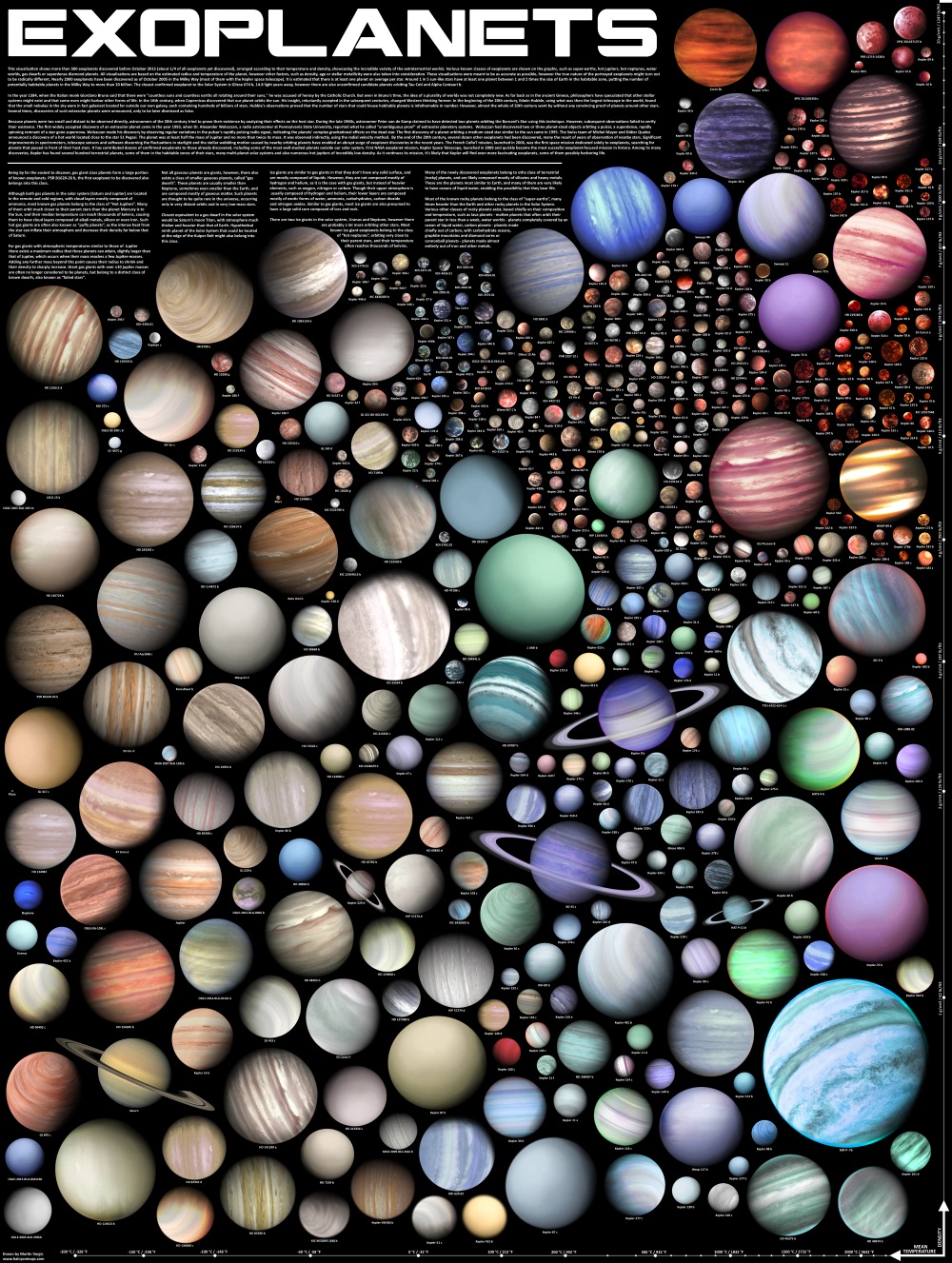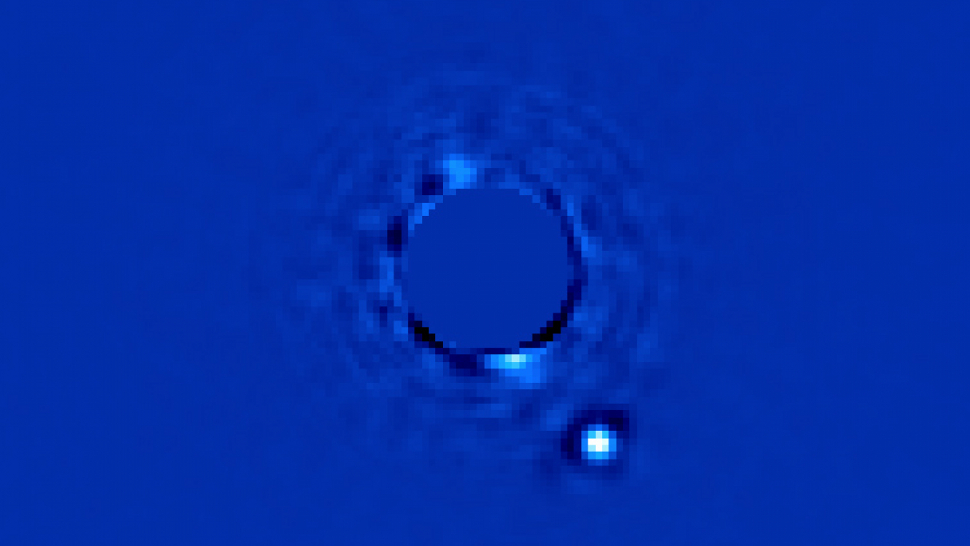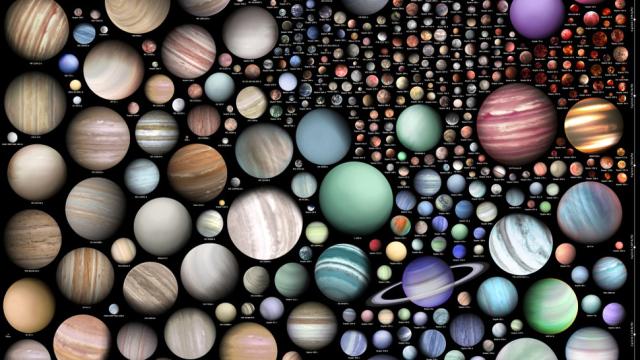Slovak graphic designer Martin Vargic has pieced together a rather meticulous visualisation showing over 500 exoplanets discovered by astronomers as of October 2015. Like snowflakes, it shows that no two planets are the same.
Astronomers are still getting their heads around the fact that exoplanets come in all manner of sizes, orientations, and physical architectures. Our Solar System features considerable variety when its comes to the local planets, but clearly, at an intra-galactic scale, the diversity is truly enormous.
Take Kappa Andromedae b, for example, a gas giant that’s 13 times more massive than Jupiter. Recently discovered Kepler 452-b is quite Earth-like, but it’s about 60% larger than our planet. And then there’s HD 149026b, which features a surface temperature around 2000C.
Vargic’s new poster, a larger version of which can be found here, does a good job conveying this interplanetary diversity.

Vargic described the poster in an email to Gizmodo:
This visualisation shows more than 500 exoplanets discovered before October 2015 (about 1/4 of all exoplanets yet discovered), arranged according to their temperature and density, showing the incredible variety of the extraterrestrial worlds.
Various known classes of exoplanets are shown on the graphic, such as Super-Earths, Hot Jupiters, Hot Neptunes, water worlds, gas dwarfs or superdense diamond planets.
All visualisations are based on the estimated radius and temperature of the planet, however other factors, such as density, age or stellar metallicity were also taken into consideration.
It’s important to point out that these are all artistic impressions of exoplanets. Very few alien worlds have actually been directly visualised, and they tend to look a little…vague:

The Beta Pictoris System, located a mere 63.4 light-years away (Credit: Gemini/Christian Marois, NRC Canada)
Hopefully, with the next generation of space telescopes, like the James Webb, we’ll start to get some higher-res images of exoplanets. But they will never look quite as good as they do in these visualisations.
